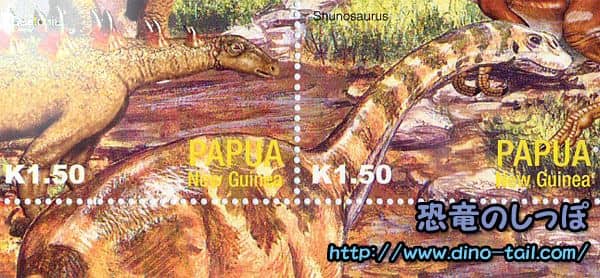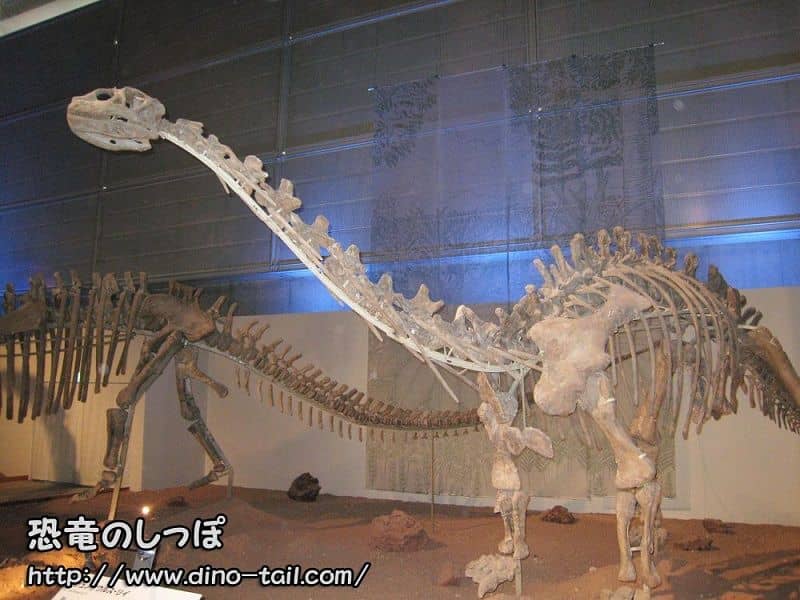About Shunosaurus
| Scientific Name (Genus) | Shunosaurus |
| Meaning of Name |
Lizard of Shu (an ancient name for Sichuan province)
Shu (ancient name for Sichuan) [place name] - saurus (lizard) [Greek] |
| Classification | Saurischia, Sauropodomorpha (Sauropoda) |
| Total Length | Approx. 9.5 - 11m |
| Diet | Herbivorous |
| Period | Middle Jurassic (approx. 170 million years ago) |
| Species | Shunosaurus lii |
| Year of Paper Publication | 1983 |
| Description Paper |
Dinosaurs from the Jurassic of Sichuan.
Palaeontologica Sinica, New Series C 162. by Dong, Z., Zhou, S. & Zhang, Y. 1983. |
Features
Shunosaurus was a sauropodomorph that flourished in China during the Middle Jurassic.
More than 12 complete skeletons and well-preserved fossils have been found.

Its neck was relatively short for a sauropod. And its greatest weapon was at the end of its tail. It had a bony club (tail club) formed by the fusion of several caudal vertebrae, which it is thought to have swung to defend itself against predators like Yangchuanosaurus.
Even more surprisingly, in some specimens, a pair of sharp spikes (osteodermal spines) about 5 cm long were found attached to the tip of this club. This made Shunosaurus's tail a very powerful weapon, combining both impact and piercing power.
Although many well-preserved fossils have been found, all the skull fossils have been excavated in a compressed or damaged state. Therefore, various theories have been proposed regarding the shape of its head, from a wide, short snout to a long snout.
A Short Neck Tells of Its Diet
Shunosaurus did not have a neck long enough to reach the heavens, like the later Diplodocus or Mamenchisaurus. The structure of its relatively short neck, which was well-suited for horizontal movement, tells us about its diet.
Instead of eating leaves from high up in the trees, they were 'low browsers' that primarily ate low-lying plants such as ferns and cycads , up to a height of about 2 meters from the ground. This allowed them to coexist with other, longer-necked sauropods (such as Omeisaurus) that lived at the same time, without competing for food.
Discovery and Description Paper

The first specimen of Shunosaurus was excavated in 1977 by a group of students during a paleontology field trip.
In 1983, it was described as the new genus and species Shunosaurus lii by Dong Zhiming and his colleagues from the Institute of Vertebrate Paleontology and Paleoanthropology in China. The genus name comes from 'Shu,' the ancient name for Sichuan, the province in China where it was discovered.
